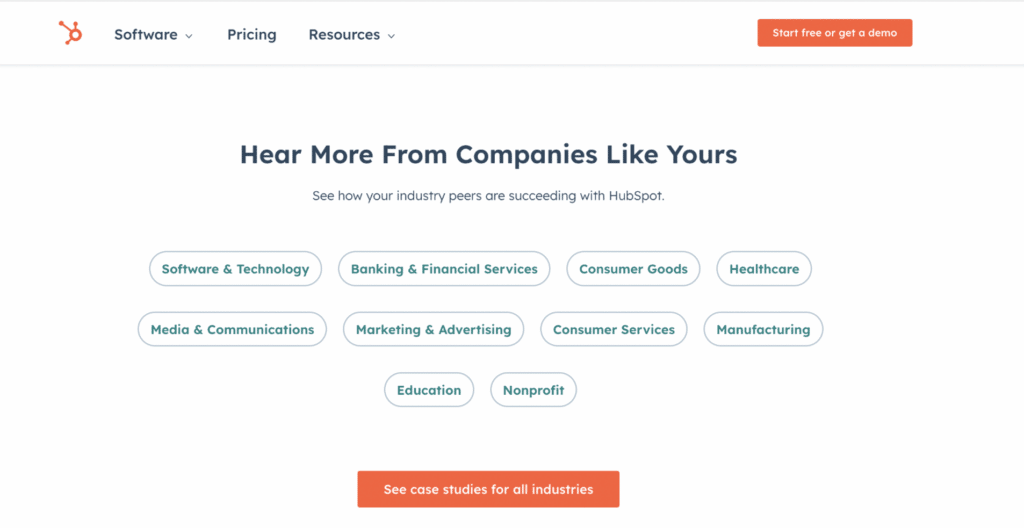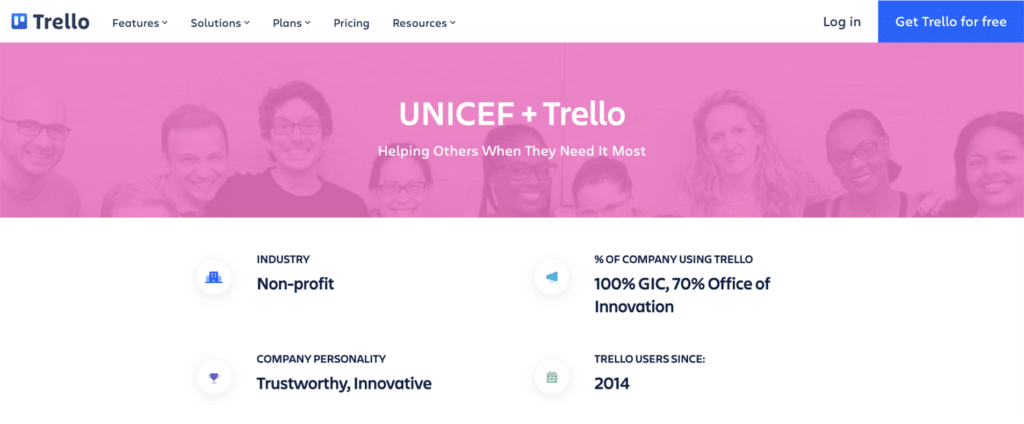Getting your target audience to trust your SaaS product can be a challenge. You can tell them how good your product is all day, but sometimes it takes more than that to win them over. SaaS case studies can help show your product in action and quantify the results your target audience can expect.
39% of marketers claimed that case studies produced the best results out of all their content assets, further solidifying their status as a powerful marketing tool.
The best SaaS case studies are relatable to your target audience and showcase the results they can expect from using your product. You can use case studies both to attract new leads and convert them into paying customers and to retain and upsell your existing customers.
Here’s everything you need to know about why case studies are a great way to showcase your product and how you can produce them effectively.
Five benefits of creating SaaS case studies
Here are five benefits of employing SaaS case studies and why they should be a core part of your SaaS content marketing strategy:
1. Build credibility and trust with potential customers
When you create a case study, you’re not just promoting your product – you’re also building trust with potential customers. 79% of people have watched a video testimonial to learn more about a product, company, or service.
People are more likely to try a new product if they see it’s already helping other businesses like theirs. Case studies help show your target audience that your product is right for them by demonstrating how it’s helped others similar to them.

HubSpot, for instance, uses case studies to show how its software has helped businesses in various industries. Because they know that different businesses have different needs, they create case studies relevant to their target audience. By doing this, HubSpot not only promotes its product but also establishes itself as a credible source of information for businesses who want to improve their marketing.
2. Generate leads and attract new customers
SaaS case studies are one of the most effective lead generation tools available. They help you attract new customers and show them how your product can help them overcome their specific challenges.
When someone reads a case study, they should be able to imagine themselves in the customer’s shoes. If they see your product is exactly what they need to solve their problem, they’re much more likely to reach out and inquire about your product.
For example, if you sell project management software, you could create a case study about how your software helped a customer complete a complex project on time and under budget. This would be especially effective in attracting new customers facing a similar challenge.
3. Upsell and cross-sell to existing customers
Once you’ve used SaaS case studies to attract new customers, you can also use them to upsell and cross-sell your existing customers.
For example, if you offer different software tiers with distinct features, you can create a case study demonstrating how a customer who started with the basic package increased their productivity by upgrading to the premium package.
This is a great way to show your existing customers the value of your product and encourage them to try out new features. It also helps you boost your revenue while ensuring your customer acquisition costs remain low.
4. Measure the success of your marketing campaigns
SaaS case studies aren’t just a valuable marketing tool – they’re also a great way to measure the success of your marketing campaigns.
For example, if you run a social media campaign and include a case study as one of your call-to-actions, you can track how many people click through to read the case study. This will give you a good idea of how effectively your campaign generates leads.
You can also use SaaS case studies to measure the conversion rate of your leads. If you include a call-to-action to contact you for a free consultation at the end of your case study, you can track how many people take you up on this offer. This will give you a good idea of how effectively your case study converts leads to paying customers.
5. Show off your product in a real-world setting
When you create a case study, you’re not just promoting your product – you’re also showing potential customers how it’s being used in the real world. This helps them understand how they can apply your product to their specific situation and see the value it can offer them.

For example, Trello created a case study showing how UNICEF’s innovation team used the tool to respond to Hurricane Irma and provide life-saving information to over 22,000 people. This is an amazing way to show how powerful Trello can be in a crisis, and it helps potential customers understand how they could use the software in their own work.
Tips for creating SaaS case studies
Here are a few tips to help you create SaaS case studies that will engage and convert your target audience:
- Focus on the customer, not the product: When writing a case study, your customer is the hero, not your product. Your job is to show how your product helped them overcome a specific challenge that allowed them to achieve their goal.
- Keep it short and to the point: Case studies should be concise and easy to read. 500 to 800 words is generally a good length to aim for.
- Use plenty of visuals: Including images and videos in your case study can make it more engaging and easier to read. You can also use infographics to highlight key points and statistics.
- Highlight numbers: Include data and statistics in your case study to show your customer’s results. This helps add credibility to your case study and makes it more persuasive.
- Make it easy to find: Include a call-to-action at the end of your case study so readers can contact you for more information. You should also include links to your product page and other relevant pages on your website.
- Write a snappy headline: A catchy headline is essential for getting people to read your case study. For example, “Zoom saves 133 work weeks per year with Asana” clearly communicates the value of Asana’s product while also piquing the reader’s curiosity.
- Start with a story: Humans are wired for stories, so starting your case study with one is a great way to hook readers in. You can then use the rest of the case study to back up your claims with data and statistics.
Start taking advantage of SaaS case studies
Boosting your revenue and reducing customer acquisition costs is essential for any business. Case studies can help you achieve both goals by showing potential customers how your product can benefit them.
Case studies are a valuable marketing tool to help you engage and convert your target audience. By focusing on the customer, keeping it short and to the point, and using plenty of visuals, you can create case studies that impact your business.



